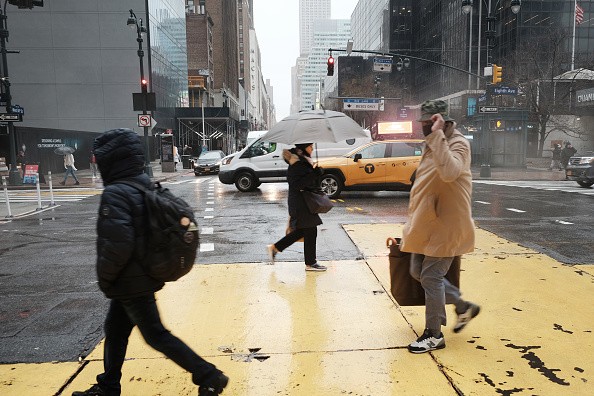The beginning of October showed a rollercoaster temperature and widespread cooldown in Midwest and Northeast.
The latest forecast revealed that parts of the Northeast would feel summery to winter-like weather starting this week.
Residents are reminded to stay updated with the weather, especially since there is a potential to unleash severe thunderstorms.
What to expect

AccuWeather's recent weather update on October 11, noted a surge of cold air with a cold front is expected this week.
AccuWeather Meteorologist Brandon Buckingham noted that the cold front could cause severe thunderstorms in the Midwest to the Eastern portions of the U.S on Wednesday or Thursday.
Meanwhile, Julia is not expected to impact the United States.
Moreover, the report noted that cold air would be present this week in the eastern U.S.
AccuWeather said the following temperatures that residents could feel, noting that the temperatures could be short-lived. Also, the weather website said the following forecasts:
- Same on Wednesday, the cold air breeze could be felt in the northern Plains, Great lakes, and Ohio Valley. Cleveland, Hartford, and Connecticut could expect from Wednesday to Thursday colder weather.
- If you expect snowflakes, the report noted that parts of the Great Lakes region, Michigan, New York, Wisconsin, and Minnesota could witness snowflakes caused by cold air and moisture.
The report also said that localized rainfall could emerge from Wednesday to Friday in northeastern Pennsylvania, New Hampshire, Maine, Massachusetts, Illinois, and Michigan. Don't forget to bring an umbrella!
Meanwhile, New York, Buffalo, Pittsburgh, and Detroit could feel mild conditions starting Tuesday and Wednesday.
AccuWeather said that the temperatures in the afternoon could reach 10 degrees high.
In addition, parts of the Eastern Seabord would feel the warmest weather; Boston could reach the 70s, while Richmond would peak in the mid-70s.
North Carolina could also expect up to 80 degrees in the afternoon.
While the temperatures seem to be jumping from a warming feeling to a colder breeze of air, health-related risks can be associated with prolonged exposure to colder weather.
Cold weather preparations
The rollercoaster weather, from a summery feeling to a winter-life environment, is expected, based on the forecasts.
The continuing widespread cooldown helps to alleviate the warm weather.
However, the cold breeze of air to snow may cause cold-related health risks, including hypothermia and frostbite.
Knowing what you should do during or before it happens is crucial. Here are some important reminders.
The Centers for Disease Control and Prevention explained that hypothermia is when a person experiences abnormally low body temperature.
Hypothermia and frostbite are considered dangerous conditions when the body is exposed to cold temperatures.
Furthermore, the CDC noted that prolonged exposure to extremely cold temperatures could cause the body to lose heat.
Low body temperature could affect the brain's thinking process.
Most at-risk individuals stay outdoors for prolonged periods and have inadequate clothing, heating equipment, and food nutrients.
On the other hand, frostbite refers to injuries due to freezing temperatures, and the CDC noted that people with poor blood circulation and inadequately dressed during the very cold weather are most at risk.
As a result, wearing layers of clothing can help to alleviate the extreme cold weather.
Staying indoors that can warm your body would be essential to prevent frostbite and hypothermia.
Most importantly, eating warm food is helpful too.
CDC reminded that if any family members show signs of hypothermia should immediately seek professional medical help.
Related Article : Hurricane Ian Devastates Citrus Grower's Florida, Causing Crop Losses
For more similar stories, don't forget to follow Nature World News.
© 2025 NatureWorldNews.com All rights reserved. Do not reproduce without permission.





